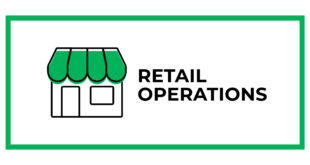By Roger Bensinger
Imagine two product displays for flowerpots in the garden section of a hardware store. When you walk up to the first one, your nose fills with the unpleasant scent of vinyl garden hoses hanging a few feet away. When you approach the second, you smell roses and immediately think of your grandmother’s amazing rose garden.
Which display do you think would be more likely to create a favorable impression—or even to result in a sale?
In fact, the science is already in on this question: Go with the roses, not the hoses, because as research amply demonstrates, favorably scented environments can positively affect consumer behavior. Link a product display with the right scent, and you stand a better chance of boosting your ROI.
Simply put, humans prefer pleasant-smelling places. And if you start paying attention, you will notice that supposedly unscented spaces actually do have their own odors. This can be particularly true in some hardware stores, where malodors from products such as pesticides, paints and solvents can “bleed” into places where consumers do not expect to encounter them.
By scenting, hardware retailers can seize control of the olfactory dynamics in their stores. When might this be appropriate? In the flowerpots example, a scent could serve two functions: neutralizing a nearby malodor and simultaneously creating a pleasant experience for the consumer.
A hardware retailer could also use scent to call attention to a seasonal sale. Let’s say the store was running a sale on a particular brand’s plastic brushes and scrubbers as part of a “spring cleaning”-themed ad campaign. The store could scent the display with a citrus fragrance, thereby reinforcing the impression of cleanliness and effectiveness. The pleasant, energizing fragrance would be subtle, but it would nonetheless help the display pop and be noticed by those walking by.
Want a kitchen appliance display to seem more “homey”? Consider working with a food-based scent that calls to mind fresh-baked cookies or apple pie.
When using fragrance in a store, technology matters. Conventional scenting methods using aerosols or evaporation techniques often lead to poor results—they are typically too weak or too strong and often produce dangerous volatile organic compounds. Fortunately, the technology has evolved to the point where small, computer-controlled units allow users to precisely dial the intensity of scent effects up or down, in much the same way that you might adjust the volume on your store’s sound system. With microdroplet-based systems, in particular, the scent effect can be contained to an area. (Be sure to use a scent provider that works with non-allergenic fragrances that exceed international public safety standards.)
Choosing the right fragrance is often an intuitive process—floral fragrances, for example, are a natural fit for a flowerpot display. But you’ll want to make sure the scent provider has a large and diverse “off the shelf” library of fragrances. The scent provider should also have a solid grounding in the science of how specific fragrances can affect human behavior.
There are all kinds of creative ways to work with scent in a hardware store. The key is to start thinking about how people experience the scent dimension in your stores. After all, making scent work in your favor can help give your store a competitive edge—right down to individual product displays.
 Roger Bensinger is executive vice president of Prolitec, Inc., which develops advanced technologies to improve indoor air quality. Prolitec’s AirQ service is the world’s leading provider of ambient scenting services, with over 60,000 installations in North America and 90 countries across the globe. To learn more, visit, www.airq.com. To contact the author: rbensinger@prolitec.com.
Roger Bensinger is executive vice president of Prolitec, Inc., which develops advanced technologies to improve indoor air quality. Prolitec’s AirQ service is the world’s leading provider of ambient scenting services, with over 60,000 installations in North America and 90 countries across the globe. To learn more, visit, www.airq.com. To contact the author: rbensinger@prolitec.com.
 Hardware Retailing The Industry's Source for Insights and Information
Hardware Retailing The Industry's Source for Insights and Information








